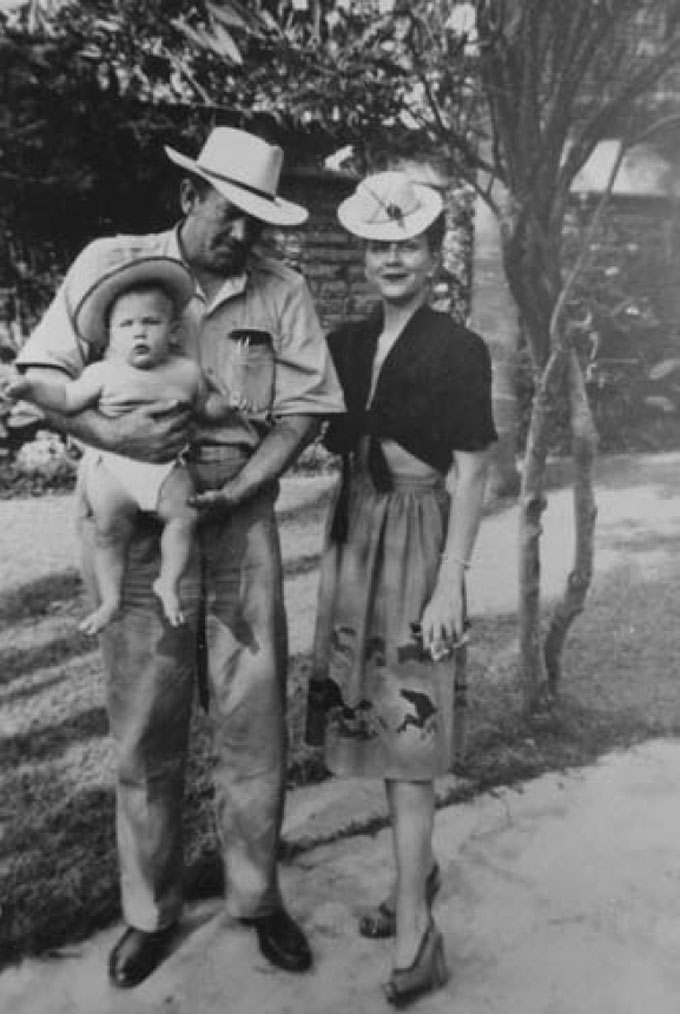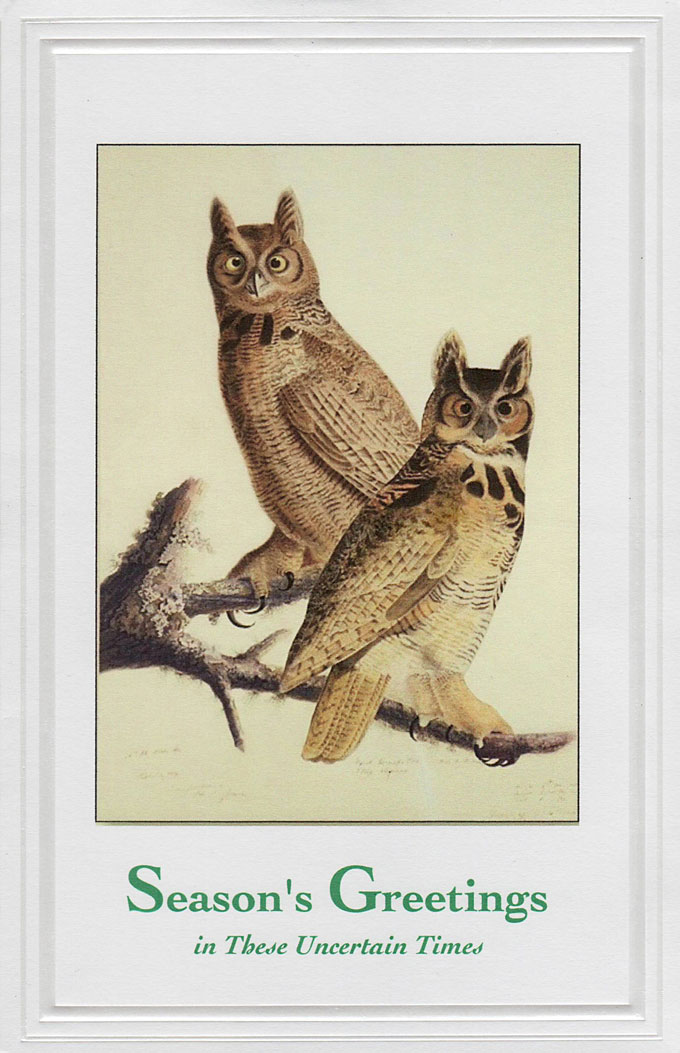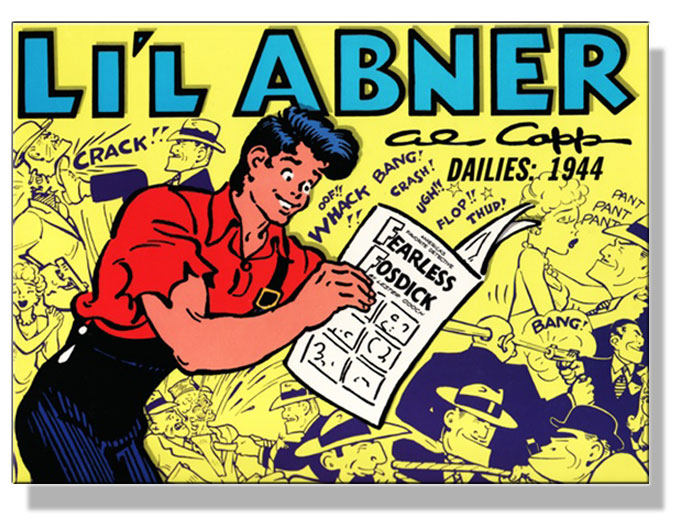Rare photos of John Steinbeck from the collection of the Martha Heasley Cox Center for Steinbeck Studies at San Jose State University—including this 1945 image of Steinbeck with wife Gwyn and son Thom—complement an array of academic research articles by Robert DeMott and others in the Winter 2016 issue of Steinbeck Review. The journal is a publication of Penn State Press and appears twice a year. Barbara A. Heavilin is the editor-in-chief, and Nick Taylor is the executive editor. Photo courtesy Martha Heasley Cox Center for Steinbeck Studies. To subscribe to the journal, visit the Penn State Press site’s Steinbeck Review page.
Archives for December 2016
Rare Photos of John Steinbeck Illustrate New Academic Research Articles
Off Limits: Of Mice and Men And the Death Penalty Today
Seventy years after its publication John Steinbeck’s Of Mice and Men continues to stimulate debate, pro and con, about the death penalty. But justifying capital punishment was the last thing on the mind of the author, a liberal thinker who created the character of Lennie to increase our understanding of the mentally challenged and the American underclass. As a defense attorney who admires Of Mice and Men for this very reason, I’m angry that Texas Court of Criminal Appeals Judge Cathy Cochran used Lennie in a 2004 legal opinion about imposing the death penalty when mental capacity is at issue. The “Lennie standard” she proposed continues to have consequences in the courts, and in the lives of the condemned.
Justifying capital punishment was the last thing on the mind of the author, a liberal thinker who created the character of Lennie to increase our understanding of the mentally challenged and the American underclass.
John Steinbeck’s late son Thom, an accomplished writer, was furious about Judge Cochran’s opinion after it was rendered. In a 2012 interview with the Beaumont (Texas) Enterprise, Thom’s wife Gail Steinbeck, an attorney, said that “his ears turned red” when her husband first learned of Ex Parte Briseno, in his view a gross distortion of his father’s meaning. In a statement published by The New York Times on August 8, 2012, Thom complained bitterly about the misconstruction of his father’s intentions in writing Of Mice and Men:
I had no idea that the great state of Texas would use a fictional character that my father created . . . as a benchmark to identify whether defendants with intellectual disability should live or die. My father was a highly gifted writer who won the Nobel Prize for his ability to create art about the depth of the human experience and condition. His work certainly wasn’t meant to be scientific, and the character of Lennie was never intended to be used to diagnose a medical condition like intellectual disability. I find the whole premise to be insulting, outrageous, ridiculous and profoundly tragic. I am certain that if my father, John Steinbeck were here, he would be deeply angry and ashamed to see his work used in this way.
The Supreme Court Considers the Case of John Steinbeck
In 2002 the Supreme Court outlawed the death penalty for the intellectually disabled, but left it to the states to define what constitutes intellectual disability. Since 2004 courts in Texas have used Judge Cochran’s ill-considered Lennie standard to determine intellectual disability in capital punishment cases. Arguing before the Supreme Court last month in Moore v. Texas, the solicitor general of Texas, Scott Keller, bristled when Justice Sonya Sotomayor asked him about the state’s use of the Lennie standard, an illogical jumble concocted from a sentimental—and incorrect—interpretation of John Steinbeck’s character. “The character from Of Mice and Men was never part of the test,” asserted Keller in the state’s defense: “it was an aside [in Judge Cochran’s] opinion.” Justice Sotomayor replied, “But it informed its view of how to judge [intellectual disability],” insisting that Texas clearly “used the Lennie standard.”
Since 2004 courts in Texas have used Judge Cochran’s ill-considered Lennie standard to determine intellectual disability in capital punishment cases.
Questions about Judge Cochran’s odd Of Mice and Men citation—and the quirkiness of a judge relying on a work of literary fiction to support a legal opinion—had been predicted long before oral argument before the Supreme Court began. M. Todd Henderson, a University of Chicago law professor, pointed out the nature of the incongruity in 2008. “Citations to literature are extraordinarily rare in federal appellate court opinions, appearing in only 1 out of every 10,000 federal appellate cases,” he wrote. When judges do cite fictional works in judicial opinions, he continued, “they are most likely to cite to novels for propositions that are closely related to their own work and job.” That’s why it’s baffling that Judge Cochran was reportedly “unfazed” when she learned of Thom Steinbeck’s outrage over her violation of his father’s purpose in writing Of Mice and Men.
Citations to literature are extraordinarily rare in federal appellate court opinions, appearing in only 1 out of every 10,000 federal appellate cases.
John Steinbeck wrote much of Of Mice and Men at the Steinbeck family cottage in Pacific Grove, California. Ironically, Judge Cochran is said to have reread “all of Steinbeck” while living in nearby Monterey, three decades later, in the 1960s. Recently my wife and I traveled to the National Steinbeck Center in neighboring Salinas to celebrate our 15th wedding anniversary. Driving through John Steinbeck’s beloved Salinas Valley, we saw the still poor, still struggling migrant workers toiling under the California sun, like Lennie and George, for subsistence pay. That evening we left our comfortable bed and breakfast to stroll hand-in-hand along the shore celebrated by Steinbeck in Sea of Cortez and Cannery Row. Nowhere, not even in the turbulent tide pools that Steinbeck explored with his wife Carol, did we perceive the death penalty.
Christmas Eve, with Owls: Poetry by Robert DeMott
Christmas Eve, with Owls
“I rejoice that there are owls. Let them do the . . . maniacal hooting for men.”
—Henry David Thoreau
In deepening shades of rose and magenta,
evening steals across Appalachian foothills
in this little tucked-away corner of Ohio we call home,
and a slivered moon, like a nail filing,
catches itself in the bare limbs of backyard trees
where last night in our grove of pines and oaks
a pair of great horned owls kept up their hoo-hooing,
the beat-beat of their bass drum carrying way beyond
our wrapping presents and offering holiday cheer,
finally echoing at the margins of our sleep,
that moment before the moment after,
when the last stirrings of children in our house—
eager for what they hope dawn will bring—
settled to quiet, and my love and I entered at last
a room inside a room, where we wondered if
our life on earth was ever-blessed as the good books say,
or only a brief dream, fearful and uncertain,
laden now by chill winds and more news
from our feathered pair, their dirge traveling
oceanic distances and blue-black star roads
this night of all nights, in this year like no other,
toward us, toward you.
In memory of Bob Bertholf, Helen DeMott, Jim Harrison, Mari Lyons, and Thom Steinbeck.
“Great Horned Owl” from John James Audubon’s Birds of America. Designed by Textual Healing.
Pop Culture Quiz: What Comic Strip Did John Steinbeck Take Seriously?
A native Californian with a natural feel for pop culture, John Steinbeck was a serious fan of “Li’l Abner,” Al Capp’s long-running comic strip about life in Dogpatch, U.S.A. The comic strip ended in 1977. Steinbeck, who wrote the introduction to a collection of Al Capp cartoons, died two years before the first Comic Con in San Diego—short for Golden State Comic Book Convention—celebrated America’s love affair with comic strips, comic books, and action heroes in 1970. If he’d lived, Steinbeck would have applauded the idea behind the event: a let’s-party conclave of readers young and old, with a big-tent embrace of literature in all its forms. Luckily for Steinbeck lovers, the Salinas Valley Comic Con, sponsored by the National Steinbeck Center, Salinas Public Libraries, and Hartnell College, will take place December 16-18 on the Hartnell campus at 411 Central Avenue, not far from John Steinbeck’s childhood home and the National Steinbeck Center, in Salinas, California. “John Steinbeck was expansive in his notions about what literature is and can be,” explains Susan Shillinglaw, the Center’s director: “The National Steinbeck Center printed on its Comic Con mug another Steinbeck quote—‘Comic strips might be the real literature of our time.’” Check out “John Steinbeck Foresees Salinas Valley Comic Con” for event details and expert commentary on John Steinbeck’s connection to pop culture, then and now.





